The Cost of Draught Proofing a Property
Last updated 8th September, 2021
All you need to know about draught proofing cost, including costs of materials, labour and time frames.
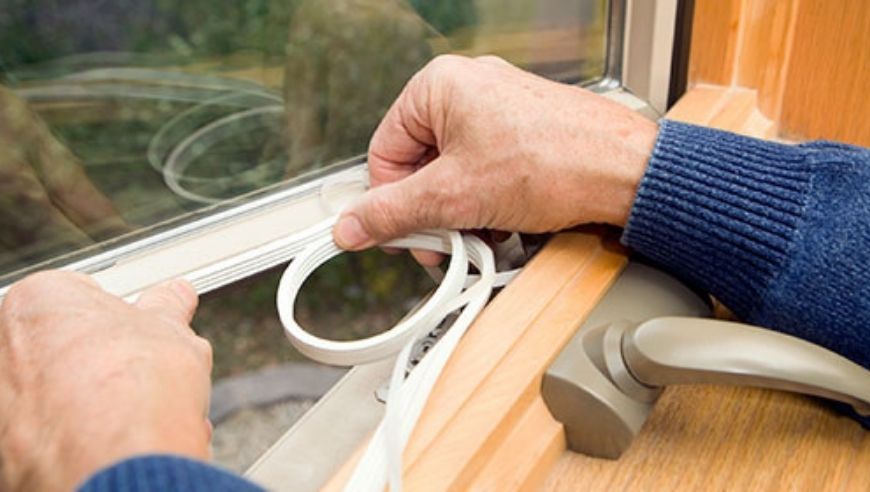
How Much Does Draught Proofing Cost?
Draught-proofing is one of the most cost-effective home improvements you can undertake and can be relatively inexpensive to complete either as a DIY job or by hiring a professional.
Costs can range from as little as £5 for a portable draught-excluder that can be placed in front of a door, to upwards of £300 for a window to be replaced; if more than one window needs replacing, the costs can climb significantly.
The cost of installing draught-proofing measures required will vary from house-to-house depending on the age of the build, which areas of the home need addressing and whether there are any access issues.
Your geographical location may also affect the prices of local tradespeople who can complete the work.
Draught Proofing Prices
Below is a table outlining the average cost of different draught-proofing methods that can be employed within a home and their cost including materials and labour
| DRAUGHT-PROOFING METHOD | TIME-FRAME | COST |
|---|---|---|
| Window insulation strips (per window) | 15 – 45 minutes | £35 - £45 |
| Window insulation strips (8 medium-sized windows) | 2 – 6 hours | £120 - £180 |
| Replacement exterior door | 3 – 6 hours | £400 – £1,200 |
| Door insulation strips | 15 – 45 minutes | £25 - £50 |
| Fixing a crack in the wall | Up to 1 hour | £50 - £100 |
| Filling a hole around pipes | Up to 1 hour | £50 - £80 |
Supply Costs
The following table illustrates the average cost to purchase different draught proofing materials
| MATERIALS | COSTS |
|---|---|
| Window insulation strips | £10 - £20 per 15m |
| Brush strips | £10 - £30 per 5m |
| Replacement exterior door | £250 - £1,000 each |
| Silicone mastic | £5 - £15 per tube |
| Decorators caulk | £5 - £10 per tube |
| Expanding insulation foam | £5 - £10 per tube |
| Chimney draught-excluder | £15 - £30 each |
Additional Costs
When undergoing home improvements, it’s a good idea to consider other jobs that can take place that will complement the work being completed.
Below are some ideas of other home improvement projects that you may benefit from alongside your draught-proofing measures.
- Sometimes when a draught is particularly prominent, it is more cost-effective to get a new front door fitted, rather than trying to amend the gaps present.
- Front, or exterior, doors typically cost around £400 - £1000 for materials and labour and can really have a significant impact on the appearance of your property.
- Efficient double glazing can impact draughts in your home; old, broken or blown windows can let air in and cause several problems alongside draughts such as damp and mould.
- A single replacement window typically costs around £250 - £400 to purchase.
- If the whole house requires new double glazing, you could be looking at closer to £4,000 for materials and labour.
- A new, well-insulated loft hatch could help you eliminate unwanted draughts from your attic space and help keep your heating costs down too by being more energy-efficient than the typical boarded ceiling hole.
- Loft hatch prices start at £200 including installation.
Cost Breakdown Calculator
The average cost of draught-proofing a house: £225
Materials
£158
Labour
£67
Waste Removal
£0
Labour Costs and Time Frames
The amount of time required to draught-proof your home will depend on the areas that need amending and the amount of work required to do this, but as a rough guide, your installation expert should be able to draught-proof the average home in under 3 hours.
Labour costs will vary, but typically a draught-proofing installer will charge around £20-£25 per hour for their time, though they may be considerably more in London and the surrounding boroughs
Because you will be paying an hourly rate, it’s best to get as much work done as possible during that time to maximise draught-proofing in the home; it’s recommended that the draught sites are cleared as much as possible to allow the installer to work quickly and effectively without having to waste their time (and your money).
Table of Contents
- How much does draught proofing cost?
- Labour costs and time frames
- What is draught proofing?
- What does draught proofing entail?
- Cost affecting factors of draught proofing
- Building regulations for draught proofing
- DIY draught proofing
- Types of draught proofing
- Insulation strips for windows cost
- Brush strips for doors cost
- Draught-proofing an open, unused chimney cost
- Draught excluders cost
- Benefits of draught proofing
- FAQs
- How to find & hire a draught proof installer
- Sources
What is Draught Proofing?
Draught proofing is the process of eliminating unwanted or unintentional ventilation within a home that can otherwise impact temperature and moisture control within the property.
Draught proofing offers instantaneous results in terms of energy conservation and temperature regulation within a building.
In turn, you will see a decrease in your energy bills and carbon footprint – so it’s a win-win.
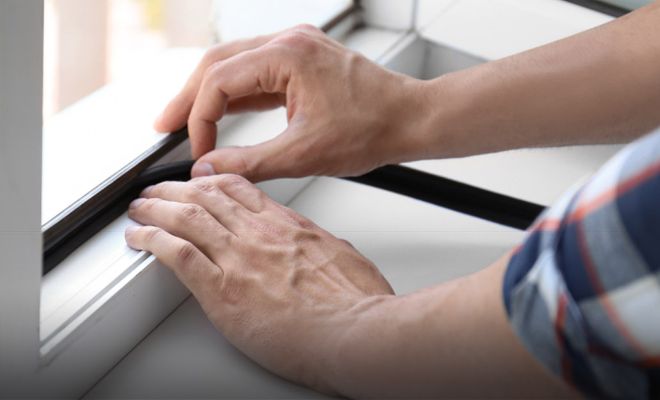
Older homes are typically more prone to draught problems than newer builds, as house settlement can cause gaps to appear in building works over time, though any home can develop a draught.
Keeping your home in good condition and regularly checking for issues can help you to determine if a draught is present, where it comes from and address the draught quickly to prevent wasting money on excess heating bills.
What Does Draught Proofing Entail?
There are multiple routes you could take to draught-proof your property, with each home varying from the next.
So, it’s best to ask your installer to check out the property for any areas where draughts may be present. Below are common areas that need addressing and how they may be fixed:
Windows
Draught proofing window costs will vary from household to household, depending on whether the issue occurs with a single window or if multiple windows are affected.
The easiest way to determine if your windows are the cause of a draught is to feel for a breeze entering around the edges of the window. You may also be able to see some light passing through gaps.
Window draught-proofing typically involves applying a weatherproof strip or insulation strip to the affected windows.
The window itself will need to be measured (generally around the parameter) to determine the correct amount of strip needed - for example, an average window is roughly 1.2 metres by 1.8 metres, requiring 6 metres total insulation stripping to ensure all edges are covered.
Doors
Draughts from external doors are typically located between the bottom of the door and the floor.
A standard method of addressing this is to attach brush strips to the bottom of the door; usually, this can be completed without having to remove the door in the process. The width of the bottom of the door will be measured to ensure the correct length of brush strip is used.
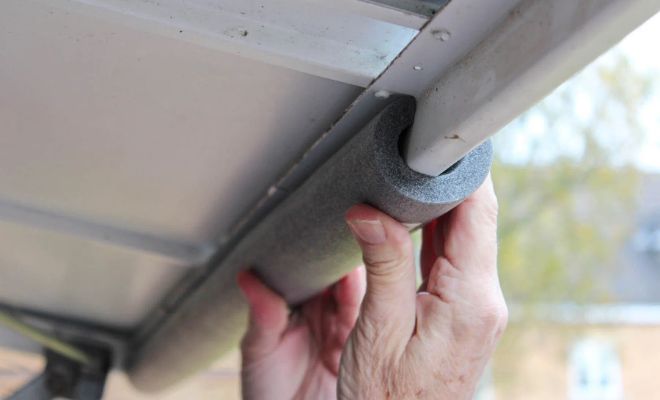
The strip will be positioned against the door so that the bristles are just touching the floor and the door marked through the pre-drilled holes along the strip.
The strip should be loosely fixed into position, and the door tested to ensure the strip is in a good position and that a seal has been created. Once happy with the positioning, the screws can be tightened completely.
Chimneys
Chimneys are notorious for causing draughts in your living spaces. If you have an unused chimney that is letting in a draught, then you may benefit from blocking the chute.
Chimney excluders typically come in balloon form and are fitted up the chimney before they are inflated to size. Alternatively, you could simply stuff the chimney with carrier bags to exclude the draught.
You should only ever block a chimney from the top or the bottom, never both. During the warmer months its recommended that you remove your chimney draught excluder to allow air to circulate, otherwise, you may find you develop moisture issues.
Cracks in the Wall
As well as being unsightly, cracks in your wall can let in more air than you first realise.
Cracks are typically addressed by simply filling them in with decorators wall filler or cement. Still, you should also be prepared to redecorate the affected patch once it has set – your draught excluder expert will not do this for you.
Cracks in the Floors and around Skirting Boards
As a house settles cracks can appear in the floorboards or along the skirting boards, inviting an unwanted draught into the property.
Floorboards and skirting boards are typically addressed in the same manner; the gaps are located and then filled with a flexible material, such as silicone mastic or decorators caulk.
This will stop the draught penetrating the home and, as it is flexible, allows for house movement without the risk of the seal being broken like you may expect with a brittle material.
Cost Affecting Factors of Draught Proofing
As with any home improvement work, there are factors to consider that can have an impact on the overall costing of the work.
Type of Draught Proofing Used
It goes without saying that some draught-proofing methods will inherently be cheaper than others; for example, replacing a front door is going to be considerably more costly than installing door insulation strips – but, depending on the severity of the draught, might be the more effective solution.
Materials Used
Although many materials are available to use when draught-proofing a home readily, you should be aware that different brands and material types may play a role in the cost of draught-proofing.
It can be tempting to get work completed as cheaply as possible, but you may end up having to repeat the draught-proofing process if the original material used is insufficient for the job. It may be worth investing a little more money in materials now than having to reinvest in the future.
Ease of Access to the Draught Site
As with most home improvement works, accessibility to the worksite affects the costing of the job.
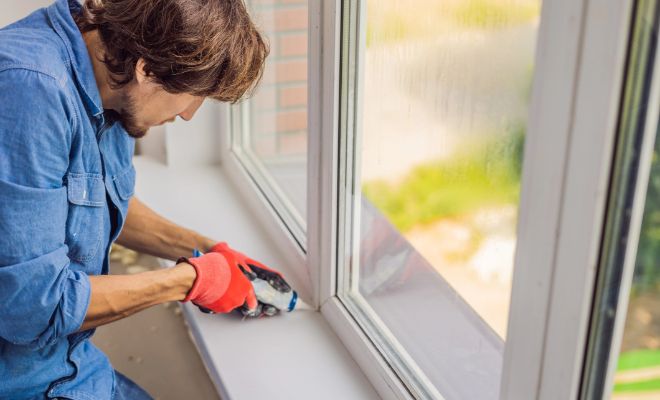
It’s essential that, whenever possible, space is cleared around work areas so that your professional can complete the work quickly without having to spend time working around other items, or moving things out of their way before work can commence, especially when being charged at an hourly rate.
Geographical Location
It’s no secret that London and the surrounding boroughs typically cost more to live in and work in than other areas of the UK, and draught exclusion service are no exception to this.
Labour rates are higher in these areas and will be reflected in work quotes for these areas.
Type and Size of Property
Larger properties will inherently have more areas where a draught may be present than smaller builds. It stands to reason, therefore, that larger will generally cost more to draught-proof than smaller properties as more work may be required.
Similarly, a medium-sized mid-terrace home should have less draught-prone areas present than a 4-bedroom detached house which will have more exposure to the elements.
Age of Property
Older properties are more prone to draught issues than newer builds as the house will settle and shift over time, often creating areas where draughts can enter the property.
Another consideration is whether the property is a listed building or within a conservation area as this may impact the work you are allowed to undertake to correct your draughting issues and can dictate the cost of correction.
Building Regulations for Draught Proofing
New build properties, by law, need to adhere to building regulations regarding draught-proofing and energy conservation during construction.
Existing buildings, however, are not governed by specific requirements under building regulations; however, Building Regulations will apply if existing doors and windows are beyond repair and you live in a listed building or an area of conservation.
You will need to contact your local building authority to determine acceptable works to be undertaken that will not compromise the historical significance of the property.

There may be a charge for plans approval and an inspection may be required, though this is at the discretion of the local authority. For non-listed buildings, many draught-proofing measures can be installed without approval from your local authority as they are considered to be part of permitted development.
All draught-proofing products purchased and implemented should meet the required British Standard (BS7386) which will ensure the minimum standards are met.
DIY Draught Proofing
Draught proofing is considered one of the easiest home improvements to undertake and is perfectly suitable for DIY execution, providing that you are physically capable of completing the work safely yourself.
In most cases of draught-proofing, you will need a few basic pieces of equipment to help the process, including a tape measure, drill and screws, safety goggles, a Stanley knife or scissors and a pencil.
Completing the work yourself could save you between £50 - £100 depending on the amount of work that needs completing, which means you will see returns in the investment even sooner than if you hire a professional to complete the work for you.
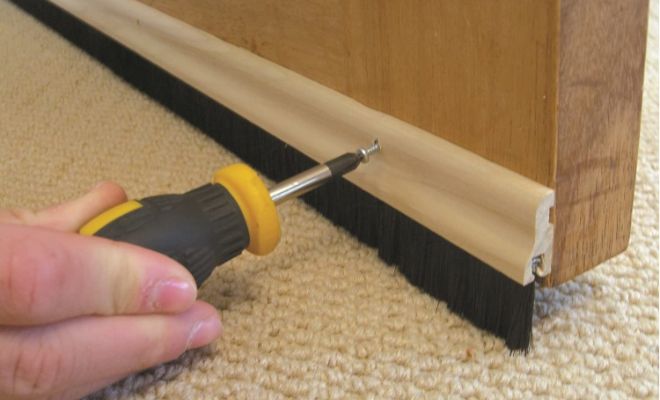
As with all DIY work, there are dangers to consider such as heights, so it’s crucial that you make sure every precaution is taken to reduce the risk of accident or injury to yourself whilst completing work yourself, and seek advice where necessary from a professional before commencing; generally mistakes cost you more to correct than they would to have them completed correctly the first time by a professional.
For existing builds, there are no specific building regulations that need to be adhered to, so you won’t require a building inspection following completion of the work, or permission to carry them out – providing you do not live in a listed building.
If you do live in a listed building, you will need to contact your local authority for permission.
Types of Draught Proofing
There are numerous draught proofing solutions available on the market suited to different situations.
Below is a list of the most common draught proofing methods used.
Insulation Strips for Windows Cost
Insulation strips tend to come in rolls and can be adhered along the edges of windows to stop a draught coming through gaps that may be present.

Insulation strips tend to cost between £10 - £20 a roll usually in a length of around 15 metres.
Pros
- ✔ Cheap to purchase
- ✔ Quick to install
- ✔ Instant results
Cons
- ✖ May need to be replaced over time
- ✖ Leave a sticky residue once removed
Brush Strips for Doors Cost
Brush strips are generally used on external doors to create a barrier between the door and your exterior space.
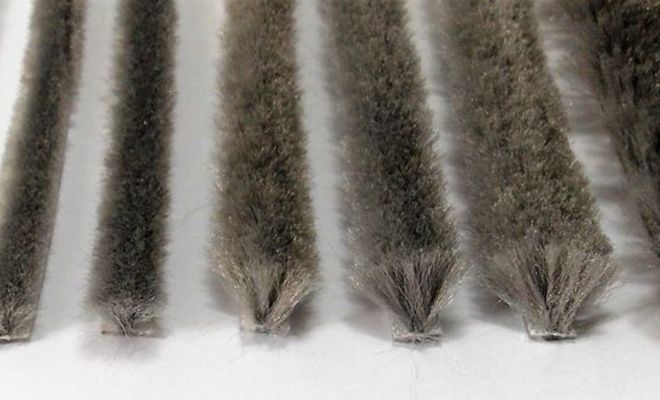
Brush strips range in price depending on brand and quality, though most can be purchase for around £10 - £30 for 5 metres, which is enough for two doors.
Pros
- ✔ Blocks draughts from underneath doors
- ✔ Helps keep heat inside your home during winter
- ✔ Helps keep cold air in your home during the warmer months
Cons
- ✖ If positioned too low, the bristles will become damaged and be ineffective
- ✖ Depending on bristle strength, may damage floors
Draught-Proofing an Open, Unused Chimney Cost
An unused chimney can invite an unwanted draught into your home. Chimney draught excluders come in various forms, with the most common being balloon fittings.
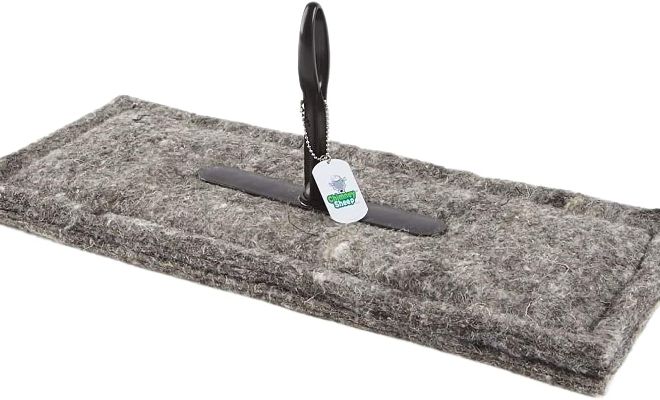
Costs vary, but on average, a chimney excluder costs around £15 - £30. Chimney sheep are also available, made of wool, at the cost of around £20 - £40 each.
Pros
- ✔ Can be installed via internal access, so no need to climb on the roof
- ✔ Adjustable to fit different sized chimneys
Cons
- ✖ Will need to be removed during the summer months to allow ventilation
Draught Excluders Cost
Draught excluders, in this instance, refers to portable and weighted fittings that can be positioned against a draught-prone area to eliminate the unwanted breeze.

Draught excluders for windows and doors can be purchased from as little as £5 each.
Pros
- ✔ Portable so can be repositioned
- ✔ Suitable for use in front of windows and doors
- ✔ Cheap to purchase
- ✔ Can be used as and when needed
Cons
- ✖ Only a temporary solution
- ✖ Need to be appropriately weighted so that they are not blown out of position
- ✖ Take up space and may be unsightly
Benefits of Draught Proofing
As with all home improvement projects, there are benefits to be reaped once the job is complete.
Listed here are just some of the benefits of having correctly installed draught proofing in your home.
Energy Efficient
By making sure your property is adequately draught proofed you should see a reduction in your energy bills; this is because your home will be better insulated and you are no longer trying to heat spaces where it can escape through the draught, meaning your system can run more efficiently
Cost-Effective
Draught proofing is a relatively inexpensive procedure that is budget-friendly and could pay for itself in as little as 1 – 2 years, meaning it has a great return on investment for the upfront costs.

Increased Property Value
With an increase in energy efficiency and lower home running costs, you could see an increase in your property value as a result of adequately installed draught-proofing in your home.
Eco-Friendly
A reduction in energy consumption will help reduce your carbon footprint, meaning draught-proofing is an eco-friendly process that benefits not only you, but the environment as well.
FAQs
This can be done by using draught proofing strips, brushes or even replacing the door entirely if necessary.
How To Find & Hire a Draught Proof Installer
Whilst it may be tempting to hire the first professional draught-proofing expert you come across, it’s important to get at least three quotes for any work you want undertaken to ensure that you are paying a fair price for the work that needs doing.
You can use this free tool to get three free quotes today.
In addition to this, you should check whether your installer has a portfolio of their work that they have completed so you can ensure that the end product will be up to your standards.
Similarly, if you know someone who has undergone similar work, ask whether they would recommend their installer to you for the standard of their work and rates charged; your friends, family and neighbours are likely to give an honest review of their experience and can be a good indicator of what to expect during the process.
As with most professionals, your chosen draught-proofing expert should hold valid public liability insurance so that in the event of an accident, the cost of repair or damages will be covered.
Sources
https://energysavingtrust.org.uk/home-insulation/draught-proofing
https://www.which.co.uk/reviews/insulation/article/draught-proofing









